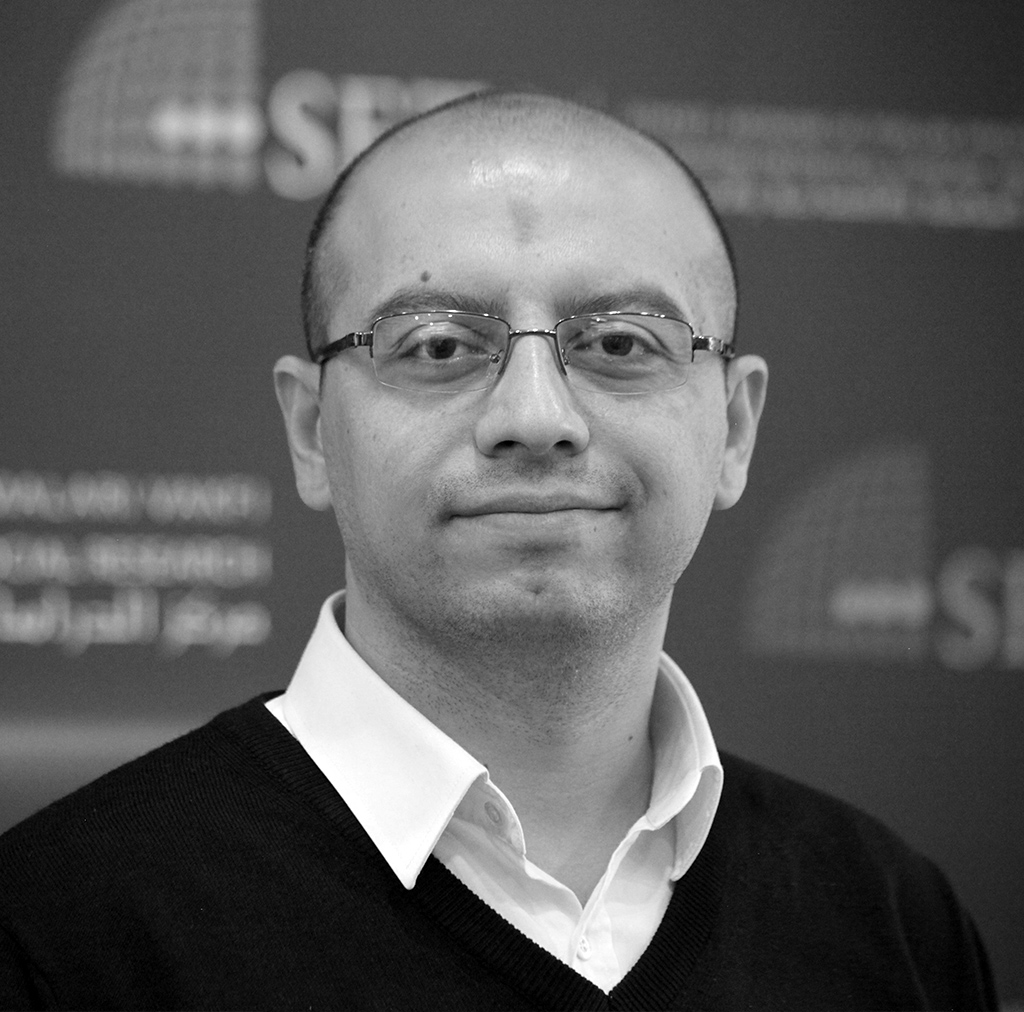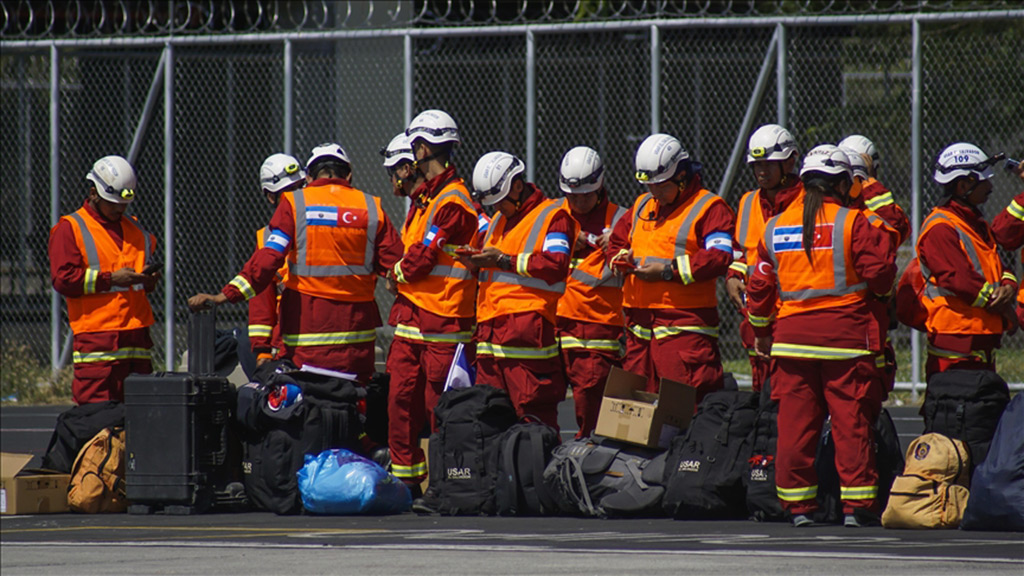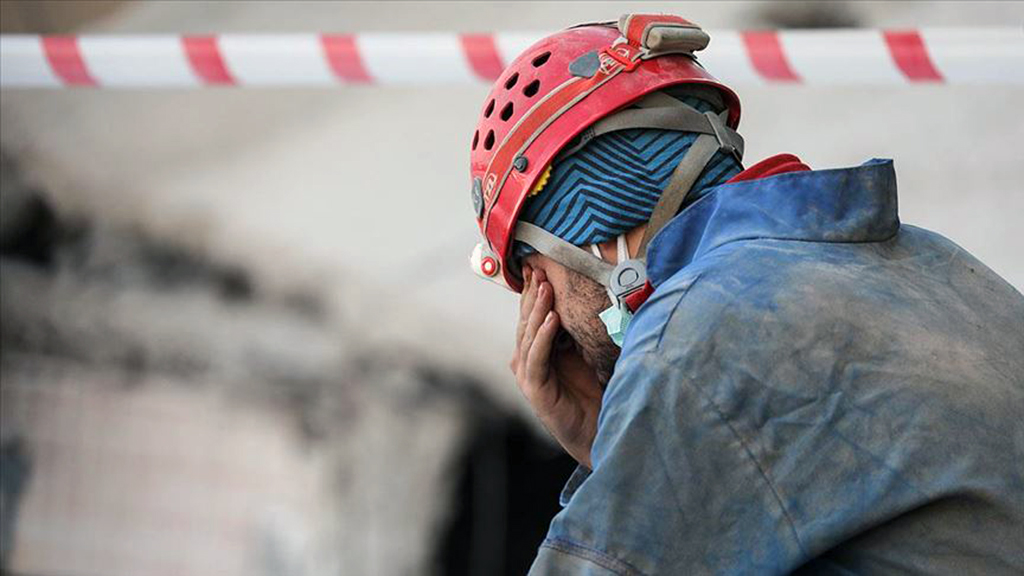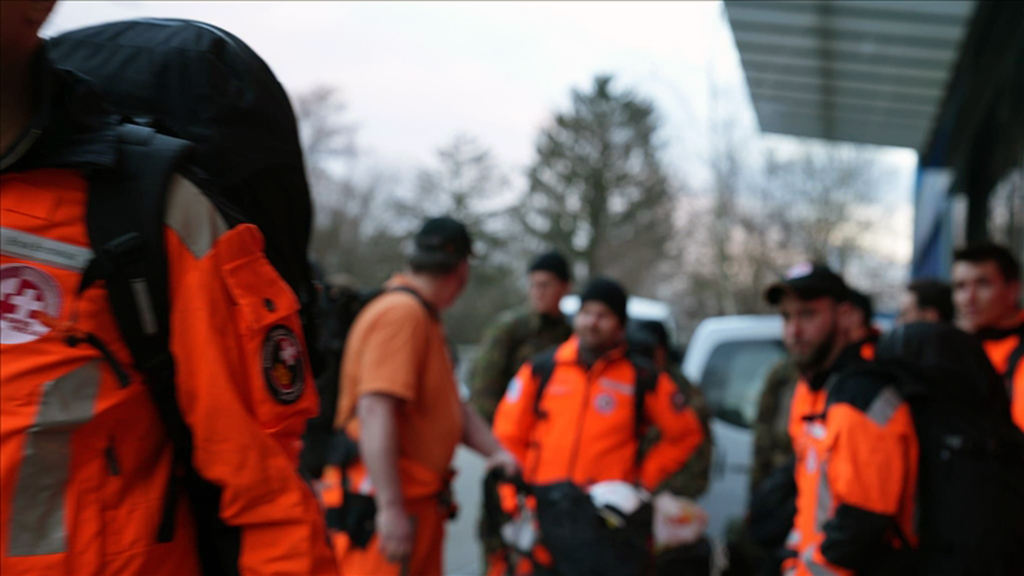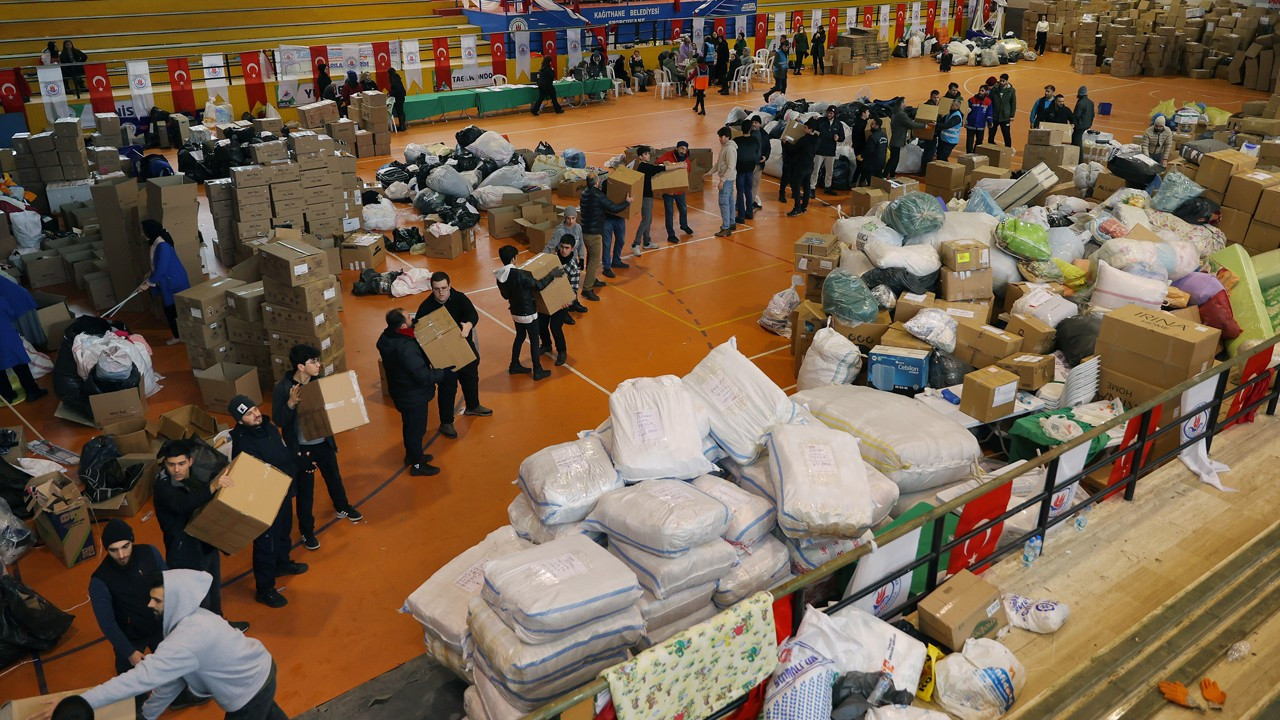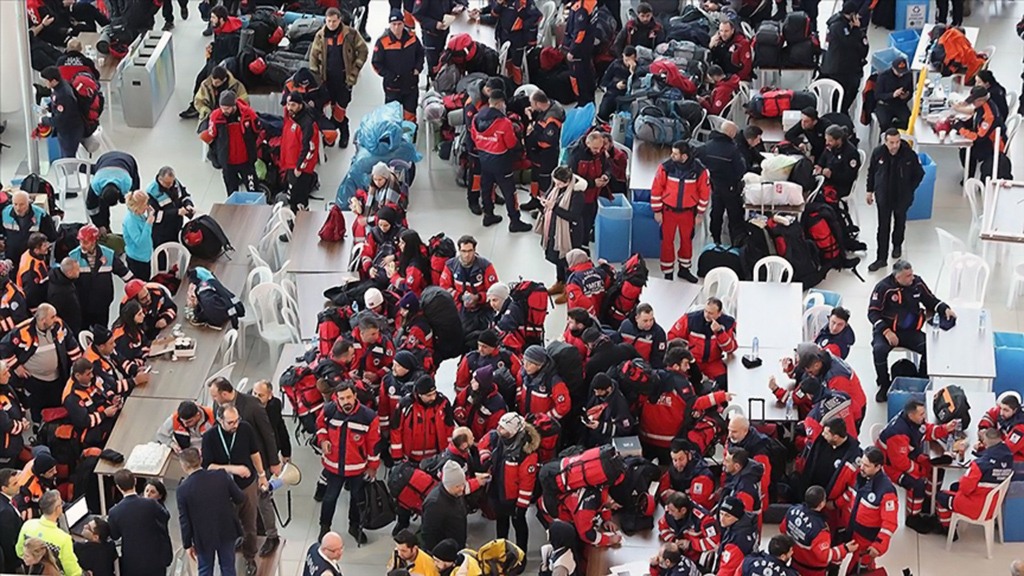
Disaster Management Cooperation Bolstered by Civil Society and Volunteering
There is no doubt that the Turkish Red Crescent remains a prioritized civilian entity due to its historical origins, institutional past, and capacity, but it cannot represent the entire civilian domain by itself in this day and age. As such, a mechanism for disaster management should be put in place that ensures the readiness of all official and civilian resources and the effective use of those resources for a rapid response.
Share
Türkiye has been mourning since February 6, 2023. I offer my condolences to the Turkish people and wish a speedy recovery to the wounded. As the nation and the state work together to heal everyone’s wounds, it must be our top priority to discuss issues in disaster management and, if necessary, address our shortcomings. This is why we must carefully analyze civil society, volunteerism, and cooperation – major areas that overlap between disaster response and disaster management.
Civil society lacks a universally agreed-upon definition. Yet, it may be described as organized activities in which individuals engage independently of the state, based on their rights and liberties, and for the sake of society (as opposed to material gain) – or the domain where such activities take place. And what exactly is civil society or volunteerism, which bears such importance and represents a subject of public debate today?
The number of nongovernmental organizations (NGOs) has increased worldwide since the 1980s. For example, there were 1.27 million NGOs in France in 2018. According to official data, more than 20 million people volunteered the following year. Whereas 13 million of those individuals worked with NGOs, 4 million volunteered through other organizations. The rest engaged in “direct volunteering” – spontaneous voluntary acts carried out without joining any organization.
The origins of Turkish nongovernmental organizations may be traced back to charitable foundations and guilds of the Ottoman and Seljuk empires. Nonetheless, there were no professional NGOs in Türkiye until the 1980s. To make matters worse, the September 12, 1980 coup d’état exerted massive pressure on any existing civil society. Still, the number of nongovernmental organizations began to increase shortly thereafter, coinciding with the institutional restructuring of such entities. In this sense, the domain of civil society began to expand in Türkiye, as elsewhere, starting in the 1980s. It is possible to argue that such organizations became able to act much more autonomously over the last two decades.
Nongovernmental Organizations and Volunteering
Within the definition of civil society, nongovernmental organizations generally come to mind immediately. Such organizations do not belong to the state or the private sector. Obviously, there are NGOs in the domain of civil society. Yet the “individual” element represents a separate part of that domain. Here, the main idea is for members of civil society to coordinate. Each volunteer organization represents a nongovernmental organization but not all nongovernmental organizations are about volunteering. In this sense, volunteerism corresponds to civil action. After all, most of the hard work in the domain of civil society originates from volunteer activities. Indeed, if one were to calculate the economic value of volunteer work (based on the salary being paid for the same amount of time), one would conclude that volunteers are more valuable than the total sum donated to such organizations.
Volunteerism has been an important item on the agenda of many nations for the last two decades. It represents a key policy area vis-a-vis the empowerment of civil society. Specifically, volunteering refers to all regular activities, which are planned and scheduled in advance and carried out as part of a host organization without receiving payment in exchange. In this context, the many examples of volunteerism include social, cultural, athletic, educational, environmental, touristic, and rights-oriented activities as well as actions related to disasters and emergencies.
To promote volunteerism, the United Nations designated December 5 as International Volunteer Day in 1985. Moreover, the UN General Assembly passed a resolution in 1997 to designate 2001 as the International Year of Volunteers. The purpose of those resolutions was to reward volunteers for their contributions to society, encourage states to facilitate and support volunteerism, promote a sense of volunteerism and improve society’s perception of volunteers to attract more participants to voluntary activities.
Volunteer activities promote individuals’ sense of belonging in their community and self-confidence, and preserve the bonds between society and its members, especially for those who may drift away from social life due to aging. Moreover, individuals with a stronger sense of community are believed to embrace the culture of democracy more passionately. At the same time, volunteerism (as the sum of all activities that complement the practices of social states) plays an increasingly important role in improving people’s living conditions and supporting disadvantaged groups.
Disaster Management: Civil Society and Volunteers
Disaster management covers many different approaches, from the pre-disaster development of a strategy to the allocation of resources and emergency management. The participation of local and international citizens and civilian initiatives bears importance at all stages. The Dictionary of Disaster Management, which Türkiye’s Disaster and Emergency Management Authority (AFAD) published, defines nongovernmental organizations in a way that highlights their relevance to disaster management. According to that document, nongovernmental organizations “emerge and operate independently of the public authorities, do not aim to profit, and act in line with the public interest.” The emphasis on civil society’s independence from the public authorities highlights a certain perception. Under Turkish law and in academic literature, nongovernmental organizations have traditionally been treated as entities that are distinguished from the administration, operate without expecting material rewards, and perform tasks that are in the public interest.
Before the 1999 earthquakes in Gölcük and Düzce, the Turkish public administration did not benefit from volunteers or civil society as much as it could have. Since then, it has made significant efforts to promote cooperation with civilians in disaster management. As mentioned in the 2002 report of a joint Turkish-Japanese research group, Istanbul Metropolitan Municipality launched a body to promote cooperation with civilians after the 1999 earthquake. A similar entity, the Civil Society Disaster Platform (Sivil Toplum Afet Platformu or SITAP), was later founded and evolved into an umbrella organization with 100 members by 2014.
Civilian elements were not included in disaster management until the 1999 earthquakes and were exclusively associated with the Turkish Red Crescent (which may be considered a semi-public entity). However, they began to organize in greater volume and more consciously after that turning point. In the wake of those disasters, Türkiye amended its Civil Protection Law to create a legal basis for the involvement of civil society and volunteers in relevant efforts and, later, adopted guidelines and signed protocols with many NGOs to include them. Moreover, the Law on the Organization and Duties of the Disaster and Emergency Management Authority (No. 5902) attested to the public authority’s acceptance of NGOs. Accordingly, the country aimed to promote closer cooperation and coordination between civil society and public institutions and encourage civil society’s contributions to policy development.
Furthermore, a presidential decree (No. 4) authorized the AFAD to ensure cooperation and coordination with NGOs, the private sector, and international organizations. In this context, the agency coordinated efforts in the aftermath of earthquakes in Van and Elazığ. At the same time, the AFAD launched a project to attract volunteers to include “real and legal persons, who wish to voluntarily become involved in any stage of disaster management” as well as “identifying their duties, expanding their capacity through training, and monitoring their performance within the volunteer system.” Accordingly, it required volunteers to “undergo training in relevant areas (e.g. health care, nutrition, psychosocial support, housing, and search and rescue) for the period before, during and after disasters and to actively work in all stages of disasters.”
According to the AFAD’s February 16, 2023 statement, 264,389 people worked in the region in the aftermath of the Kahramanmaraş earthquakes. Among them were law enforcement officials, gendarmerie officers, soldiers, health care professionals, ambulance crews, local security forces, and local support teams as well as 9,908 AFAD volunteers. NGOs contributed 35,495 professional workers. Moreover, the AFAD reported that 108 professional NGOs carried out various activities on the ground in addition to hundreds of smaller organizations that carried out support tasks. According to the authorities, tens of thousands of people volunteered through those NGOs. In this sense, it is possible to say that a large number of NGO members and volunteers operated on the ground. Nonetheless, the fact that AFAD volunteers were limited to approximately 10,000 suggests that the authorities must take additional steps to inform the public and promote people’s participation.
Today, countries approach disaster management from an integrated perspective and make different plans for the periods before, during, and after disasters. Moreover, the integrated structure requires all resources to be actively organized. Here, the inclusion of civilian elements is necessary to ensure resource effectiveness. The involvement of NGOs in the central structure, such as the Disaster and Emergency Board, and nationwide through provincial disaster and emergency directorates would be a suitable approach for minimizing risks in case of a disaster. There is no doubt that the Turkish Red Crescent remains a prioritized civilian entity due to its historical origins, institutional past, and capacity, but it cannot represent the entire civilian domain by itself in this day and age. As such, a mechanism for disaster management should be put in place that ensures the readiness of all official and civilian resources and the effective use of those resources for a rapid response. In the aftermath of the Kahramanmaraş earthquakes, too, NGOs made important contributions alongside the response of official institutions. In this sense, the AFAD’s role as a coordinating body has been recognized. However, it is important to bear in mind that a more effective response may be possible by taking advantage of the relative flexibility of civilian entities in larger areas. Defining NGOs without depriving them of their civilian nature and including them in the circle of coordination would expand the response capacity – which may be needed in the future.
Tags »
Related Articles
